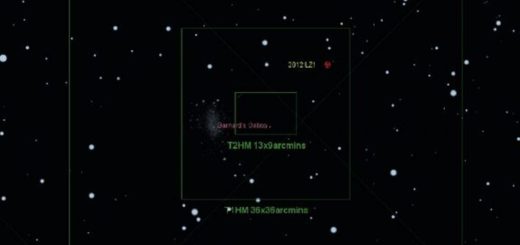Solar Storms Trigger Unexplained Phenomenon Close To Earth
– Scientists have observed how solar storms trigger an unexplained phenomenon close to Earth.
Researchers are currently unable to explain the cause of this surprising mechanism that occurs especially at high latitudes.
Solar storms may also have a strong impact on the efficiency of communication and navigation systems at high latitudes. It is therefore important to study the phenomena.

If Earth is hit by the same force as the worst recorded solar storm in history, 1859’s Carrington Event, it would be devastating.
A solar storm of this magnitude could result in year-long blackouts. Big solar flares are very dangerous.
Scientists warn the losses could be $1 to $2 trillion, and the effects could be felt for years.
This is one of the reasons why scientists keep observing the behavior of solar flares and how they affect Earth’s magnetic field.
A team of researchers from Denmark and United States have discovered that there is a surprising and unknown mechanism in play during solar storms.
During solar storms, large bursts of electrons are usually sent into the part of Earth’s atmosphere called the ionosphere, which starts about 80 kilometers above the Earth.
It happens because the magnetic field created by the eruption on the Sun interferes with the Earth’s magnetic field. It opens up to allow particles and electrons that would otherwise be reflected to penetrate the ionosphere.
Scientists are aware of this phenomenon. However, a surprising discovery also reveals that electrons at the same time disappear from large areas, which has not been demonstrated earlier.
“We made extensive measurements in connection with a specific solar storm over the Arctic in 2014, and here we found that electrons in large quantities are virtually vacuum-cleaned from areas extending over 500 to 1,000 kilometres. It takes place just south of an area with heavy increases in electron density, known as patches.
It’s a surprising discovery that we hadn’t anticipated. We can see that it happens, but we don’t know why. However, other datasets from Canada indirectly support our new observations,” says Professor Per Høeg from technical Univeristy of Denmark (DTU).
The explanation of the phenomenon should probably be found in the geomagnetic processes in the Earth’s magnetic field in a direction away from the Sun. The composition of the magnetic field undergoes dramatic changes in the area between the solar wind and the Earth’s magnetic field, triggering powerful burst of energy.
“The forerunner to the phenomenon is a violent eruption on the Sun’s surface–also known as coronal mass ejections or CME, where bubbles of hot plasma and gas in the form of particles, electrons, and a magnetic field are hurled in the direction of the Earth,” says Per Høeg.
Scientists have observed dramatic changes in Earth’s magnetic field on several occasions. There was even a time when Earth lost its magnetic field.
The Laschamp Excursion happened 41,000 years ago. It was the day the Earth lost its magnetic field.
Our planet was left unprotected from the bombardment of cosmic rays. Earth was vulnerable and left in the mercy of the cosmic forces that could easily destroy all life.
Professor Per Høeg hopes that the work conducted at DT can contribute to making navigation more reliable during ionospheric storms in the Arctic region.
The risk of disruptions in the ionosphere is one of the reasons why no routine flights are made over the Arctic, although this would shorten air travel between Europe and America. The high-frequency signals used by commercial flights over Greenland will be subject to interference during solar storms.
The ability to predict and take into account these kinds of conditions is therefore important for future commercial air traffic in the region. The same applies to marine traffic in the Arctic.
It seems that solar flares do not only interfere with our navigation and communication systems. According to some scientists solar flares can also cause changes in human health.



 Creators of mankind
Creators of mankind Description of “Tall white aliens”
Description of “Tall white aliens” Where they came from?
Where they came from? About hostile civilizations
About hostile civilizations The war for the Earth
The war for the Earth “Tall white aliens” about eternal life
“Tall white aliens” about eternal life Video: “Nordic aliens”
Video: “Nordic aliens” Aliens
Aliens Alien encounters
Alien encounters The aliens base
The aliens base UFO
UFO Technology UFO
Technology UFO Underground civilization
Underground civilization Ancient alien artifacts
Ancient alien artifacts Military and UFO
Military and UFO Mysteries and hypotheses
Mysteries and hypotheses Scientific facts
Scientific facts


















